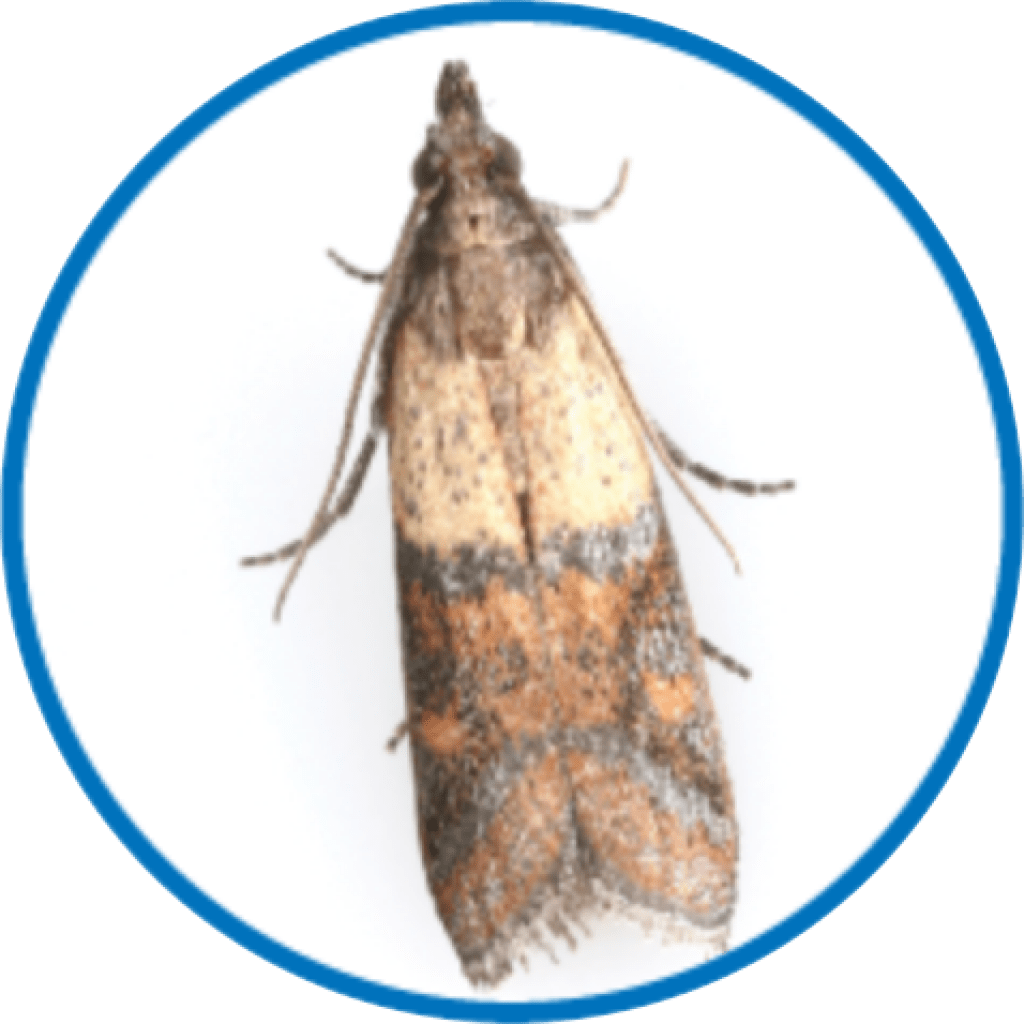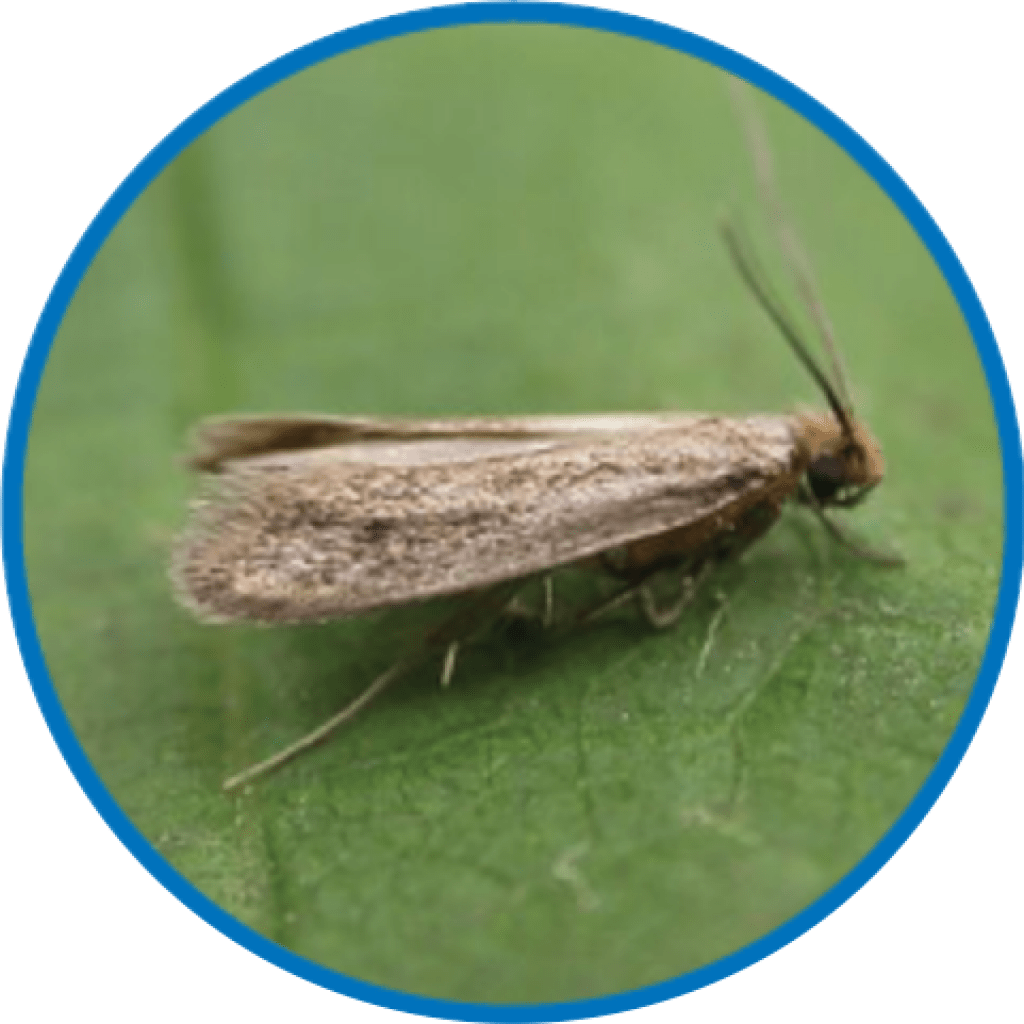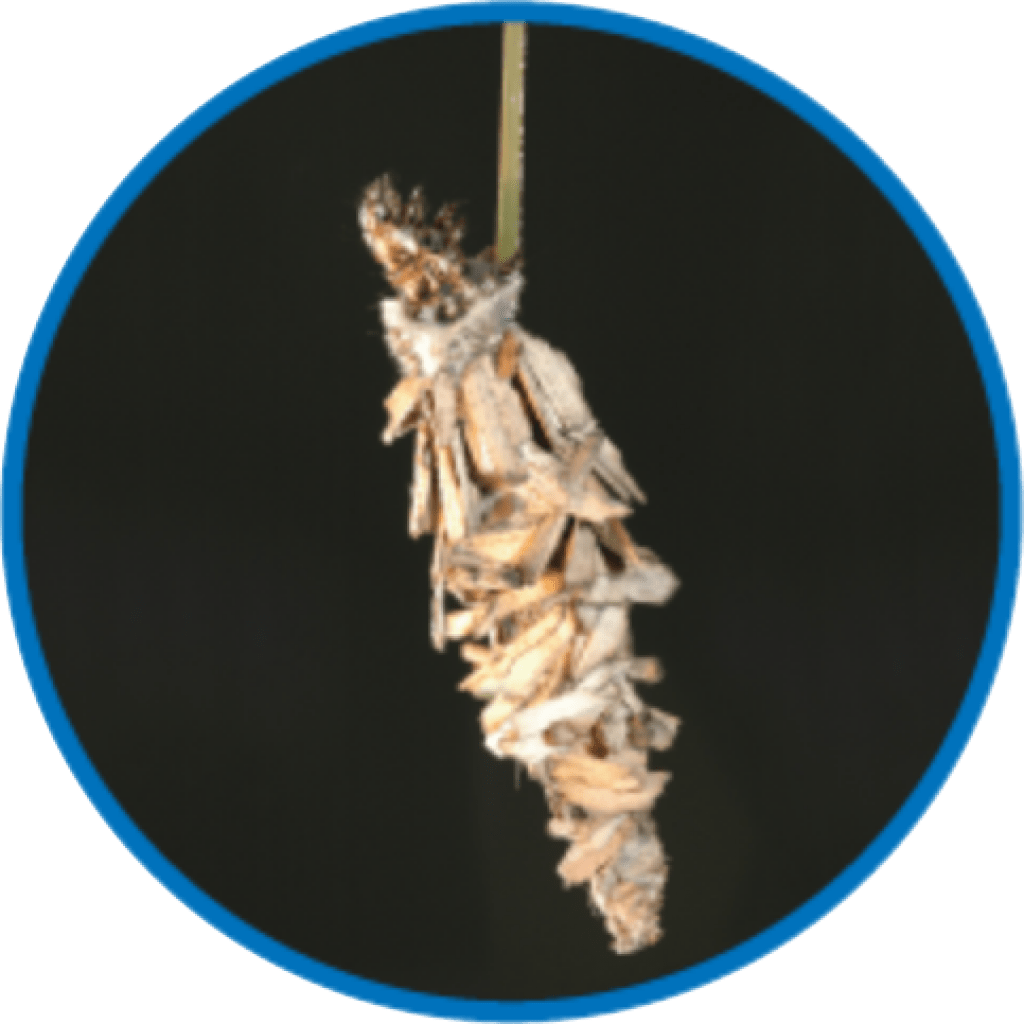BioCycle® Insects Library - Moths
Description
The Indian meal moth has a wing expanse of nearly 20mm. Markings of the forewings are reddish brown with a copper luster on the outer two-thirds, but whitish gray on the inner or body ends. The hind wings lack distinctive markings and are more or less uniformly gray.
Biology
A mature female lays 100 to 300 eggs on food material, either singularly or in groups of twelve to thirty. Larvae begin to hatch in two to fourteen days, depending on environmental conditions. Adults emerge in four to thirty days, mate, and females lay the next generation of eggs. Adults live from five to twenty-five days.
Habit
These moths like to feed on dried fruits, grains, seeds, nuts, chocolate, candies, bird seed, dog food, powdered milk, dried red peppers and candy. Attracted to the light, these bugs are found worldwide in areas where food is stored, such as grocery stores.

Description
The larvae live in the characteristic gray, seed-shaped case, which measures about 1.25cm long and is constructed of silken fiber and sand particles, lint, paint fragments, and other debris that is found. It has a slit-like opening at each end, and the tiny caterpillar is able to move around and feed from either end.
Biology
The Female moth lays eggs on crevices and the junction of walls and floors. They are cemented on debris that is found in these areas with suitable food. The eggs will take more than 10 days to hatch. Larvae will mature in 50 days before they pupate. The entire cycle from egg to adult averages 62 – 86 days.
Habit
Case Bearing moth/ Plaster bagworms are easily seen on light-colored walls attached to the underside of chairs, bookcases, and other furniture. They are often found along the edge of rugs, near baseboards, or on the lower edges of walls. Bagworms are quite common in garages and underneath buildings.

Description
The larvae live in the characteristic gray, seed-shaped case, which measures about 1.25cm long and is constructed of silken fiber and sand particles, lint, paint fragments, and other debris that is found. It has a slit-like opening at each end, and the tiny caterpillar is able to move around and feed from either end.
Biology
The Female moth lays eggs on crevices and the junction of walls and floors. They are cemented on debris that is found in these areas with suitable food. The eggs will take more than 10 days to hatch. Larvae will mature in 50 days before they pupate. The entire cycle from egg to adult averages 62 – 86 days.
Habit
Case Bearing moth/ Plaster bagworms are easily seen on light-colored walls attached to the underside of chairs, bookcases, and other furniture. They are often found along the edge of rugs, near baseboards, or on the lower edges of walls. Bagworms are quite common in garages and underneath buildings.



